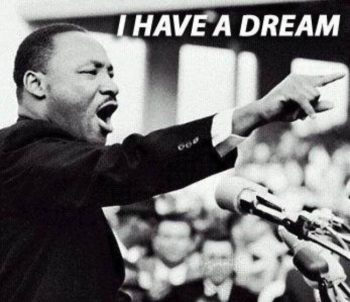 It’s been more than 50 years since Martin Luther King Jr. gave his famous “I Have a Dream” speech on the steps of the Lincoln Memorial in Washington, D.C. As we honor Dr. King’s birthday today with the “MLK Day of Service” family caregivers can perform two acts of service for their loved ones:
It’s been more than 50 years since Martin Luther King Jr. gave his famous “I Have a Dream” speech on the steps of the Lincoln Memorial in Washington, D.C. As we honor Dr. King’s birthday today with the “MLK Day of Service” family caregivers can perform two acts of service for their loved ones:
- Ensure your loved one’s end-of-life wishes are in order (including Living Wills, Health Care Directives, Durable Power of Attorney, DNR, etc.).
- Help your loved one fulfill something on their bucket list.
Following are two great ways for caregivers and their loved ones to achieve both of these dreams.
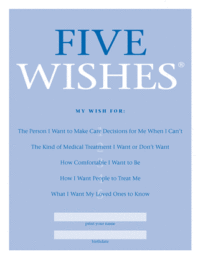 The Five Wishes
The Five Wishes
When it comes to end-of-life wishes – especially the legally binding paperwork so essential to ensure families are not pulled apart when they need to come together – it is hard to start the conversation. There is a tool available that is not only affordable, valuable and legal but helpful in beginning the dialogue about end-of-life. It is called The Five Wishes.
In 1997, Jim Towey, who had served as Mother Teresa of Calcutta’s friend, volunteer AIDS worker and legal counselor, created a nonprofit organization, Aging with Dignity. At the core of the organization was a document Towey created that was in his words a “living will with a heart and a soul.”
Essentially, the document asks five questions that cover medical, personal, emotional and spiritual needs to help you communicate how you want to be treated if you are too ill to speak for yourself:
- Which person you want to make health care decisions for you when you can’t make them.
- The kind of medical treatment you want or don’t want.
- How comfortable you want to be.
- How you want people to treat you.
- What you want your loved ones to know.
Watch our Me Time Monday video on How to Have the C-A-R-E Conversation:
To date, the $5 document (either downloadable to your computer or mailed to you) has been filled out by 18 million people worldwide and has been translated into 26 languages and Braille. It is used in all 50 states and meets the legal requirements for an Advance Directive in 42 states (in the remaining eight states you can attach The Five Wishes to the forms that state requires).
Because The Five Wishes has interesting origins with the principles of Mother Teresa infusing its purpose, this can be the conversation starter with your family. While the emphasis is on aging baby boomers to ensure these wishes are in place, having your wishes written, legally binding and communicated to family is smart for everyone.
It is the legacy of the Terri Schiavo case that shows us the agony and antagonism that can happen to tear families apart when someone’s end-of-life care is unknown. Schiavo was only 27 when she was put on a ventilator and feeding tube after cardiac arrest left her brain dead. She lay in a vegetative state for 14 more years while her husband battled her parents over whether or not to keep her alive on machines. If she had a Living Will or a Five Wishes document, there never would have been a battle.
Read the article on Casey Kasem’s legacy in showing why families need to discuss end-of-life care
The reality is if you do not have the conversation, family members can be confused and conflicted which can lead to emotional exchanges you do not want. Dying is not a choice but how the end will be is. We owe it to our families to share those wishes. Your legal wishes may be written down but now is the time to start talking.
Read the article on the late Brittany Maynard and the “Death With Dignity” Movement
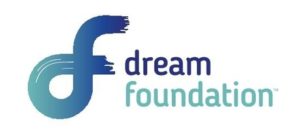 The Dream Foundation
The Dream Foundation
When it comes to dreams, we all have our bucket list.
However, if you are battling a terminal illness, that bucket list seems even more precious but perhaps more elusive. Pain, immobility and money issues can dash these dreams and many give up their joy so they can focus their efforts on surviving. Finding those moments of peace, reconciliation, validation and pleasure are part of life – no matter whether we are at the beginning, middle or end of our days.
One organization understands how important this is and grants real-life bucket list wishes to help caregivers help their loved ones achieve these end-of-life dreams. Appropriately, it is called The Dream Foundation.
In 1993, Thomas Rollerson wanted to give his dying partner one last dream: to go to the movies and see Mrs. Doubtfire starring his favorite actor, Robin Williams. Seemingly a simple request, they set out for the movie theater with water bottles to keep his loved one hydrated, a critical tool in abating the pain of his illness. The theater asked the gentlemen to leave because you could not bring your own water into the theater. Upset but not undaunted, Rollerson was dedicated to helping his loved one see a last movie. He called organizations dedicated to childhood dreams for terminal patients such as Make-A-Wish and the Starlight Foundation. All these organizations limited their help to children only and Rollerson was amazed to find no group granted adult wishes.
Ultimately, Rollerson contacted the movie studio. Twentieth Century Fox, which was behind Mrs. Doubtfire. He was astounded yet grateful when they provided a copy of the film (since the movie was still in theaters it was not yet in video stores). This experience galvanized Rollerson to help other caregivers fulfill the dreams of the adult loved one who has last wishes. Thus, The Dream Foundation was founded in 1994.
To date, The Dream Foundation has fulfilled thousands of wishes for adults battling terminal illnesses. Rollerson is proud of the foundation’s success – one of the few and longest-operating nonprofit organizations to grant wishes nationwide for terminally ill adults and to not limit the wishes to those with certain diseases (for instance there are other groups who grant wishes for adult cancer patients).
“I had a network of contacts in the Hollywood and film community and I started reaching out to see how others could help and it grew from there,” says Rollerson.
As opposed to the over-the-top wishes we watch Jack Nicholson and Morgan Freeman enjoy in the movie, The Bucket List (such as an African safari, dining in Paris and riding motorcycles along the Great Wall of China), Rollerson says his favorite wishes granted are the simple ones.
Watch the Me Time Monday video on End-of-Life Wishes:
The Dream Foundation hosted a 104-year-old’s birthday party and invited the dream recipient’s brother whom he had not seen in 40 years. Another woman had never stayed in a first- class hotel so the foundation gave her a weekend stay at a five-star resort. A 40-year-old man with lung cancer was granted a last wish of a fly fishing trip with his young sons and yet another dream recipient was given a state-of-the-art hearing aid “so he could hear what his grandchildren were saying to him.”
“It’s the simple joys in life we take for granted that become so important as we face ‘the end’,” says Rollerson. “I learn from each dream we’ve given and it has become a gift to me to give these dreams.”
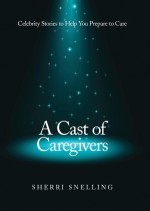 Note: Read more about end-of-life issues in A Cast of Caregivers – Celebrity Stories to Help You Prepare to Care by Sherri Snelling.
Note: Read more about end-of-life issues in A Cast of Caregivers – Celebrity Stories to Help You Prepare to Care by Sherri Snelling.
©2018 Sherri Snelling

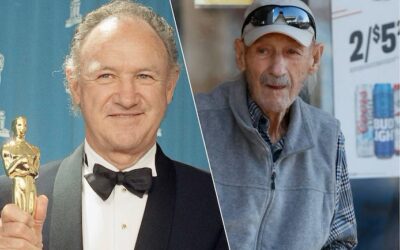

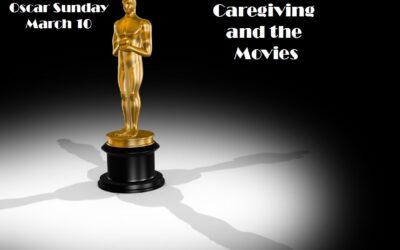
0 Comments